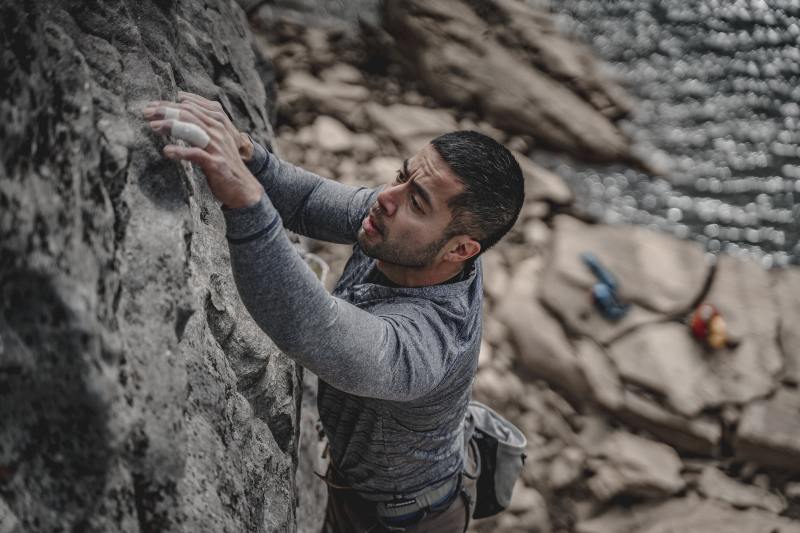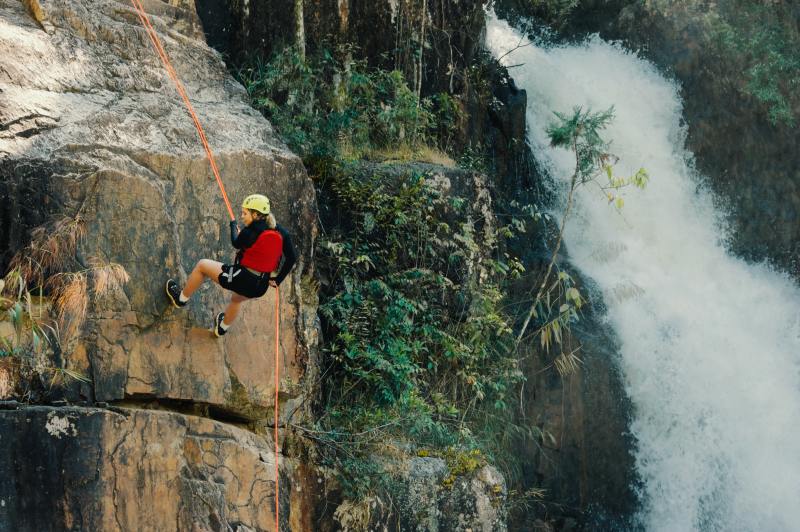Rock climbing has never been more popular than it is today, but did you know that only about 48% of people make the transition from an indoor gym to an outdoor climb? One thing I love about the sport is that both types of climbing are considered valid and challenging. However, if you’re hoping to make the transition from “gym to crag,” these bucket list locations should definitely be on your radar. Here is a list of our picks for the best rock climbing places in the world.
Disclaimer: As exhilarating and challenging as climbing can be, the sport can also be inherently dangerous. If you are new to the sport, consider enlisting the help of a professional outfitter who can make your entrance into the sport both enjoyable and safe. Always pick a route that suits your climbing level, and make sure your gear is in good condition.
Best beginner-friendly rock climbing locations

Shepherd’s Crag (Lake District, U.K.)
Difficulty: Grade Diff (Very Easy)
Shepherd’s Crag is famous for being a classic introductory climb that overlooks the gorgeous Borrowdale Valley. Located in one of England’s most picturesque climbing areas, you won’t regret strapping on your shoes for this one. This is a very easy, traditional climb, and it’s ideal for beginners who want to practice placing gear and rope techniques. For the best experience, try Brown Slabs or Jackdaw Ridge.
Railay Beach (Krabi, Thailand)
Difficulty: Routes starting from 5.6 (Very Easy)
Railay Beach, located in Krabi, Thailand is famous for its limestone cliffs and views of the clear, turquoise water. Due to the surrounding cliffs, this route is only accessible by boat, but it’s well worth it. Routes range from beginner-friendly to advanced challenges, so there’s something for everyone here. After climbing, visitors can enjoy the pristine beaches and local cuisine at beachfront restaurants.
The Chief (Squamish, Canada)
Difficulty: Routes starting from 5.6
The Chief in Squamish, Canada offers so much to climbers around the world, but I particularly love the beginner routes. This area is known for high-quality granite with cracks, slabs, and corners that are sure to be a challenge for all skill levels. With over 300 climbing routes, there’s something for everyone here, but beginners will enjoy Rock On, which is a fun, multi-pitch traditional climb. For something a little more intermediate, try The Buttress.
Best intermediate rock climbing locations

Snake Dike at Half Dome (Yosemite National Park, U.S.)
Difficulty: 5.7 R
Snake Dike is a bucket list climb for many people, and it’s not hard to see why. This climb follows a curved dike, which is a raised rib of rock that climbs up the face of Half Dome. It’s so surreal to climb Snake Dike, with amazing views of Yosemite National Park on either side. Just be prepared for the 6-mile hike that it takes to get to the base.
Supernova (Potrero Chico, Mexico)
Difficulty: 5.11a
El Potrero Chico offers one of the locations for the best rock climbing in the world. While it offers a mix of different levels, the Supernova is a standout route for intermediate climbers. This 8-pitch climb is surrounded by the Sierra Madre mountains and the Potrero Chico Valley, and has well-placed bolts for your protection.
Lonesome Dove (Rumney, NH, U.S.)
Difficulty: 5.10a (Intermediate)
As someone born in New Hampshire, I have a soft spot for Lonesome Dove. This slab climb is often considered to be the perfect intermediate climb due to its well-placed bolts, stunning mountain, and forest location (especially in the fall). It’s a great place to improve your technique on less obvious footholds and handholds.
Best advanced rock climbing locations

Troll Wall (Trollveggen, Sweden)
Difficulty: VI, A2 (5.10-11 YDS)
The Rimmon Route at the Troll Wall in Sweden is a challenging route. With a mix of aid climbing and free climbing, the technical challenges are manageable if you know what you’re doing. While certainly not easy, if you’re looking for a harder route, try the Swedish Route or the Norwegian Route. And only if you really know what you’re doing, try the expert-level big wall climbs.
The Nose at El Capitan (Yosemite National Park, U.S.)
Difficulty: 5.14a
No roundup of the world’s best climbing locations is complete without including El Capitan at Yosemite National Park. While multiple routes exist, climbing this 3,000-foot imposing granite cliff face is best left to the most experienced climbers. With 31 pitches like the Great Roof and the King Swing, The Nose is definitely the most famous climb, but you can also try other challenges, such as Freerider and Salathé Wall.
La Dura Dura (Oliana, Spain)
Difficulty: A2 to A4
La Dura Dura is a complex route that requires mental focus and physical endurance, and it has been considered one of the hardest in existence when it was first bolted in 2009. The route is 130 feet long and full of difficult cruxes that require demanding strength and precision, but if you persevere until the end, you’ll see some jaw-dropping sights of Oliana, Spain.
By far, these are some of the best rock climbing places in the world. Each of these ascents has unique sights and sounds, but they all are bound to make your heart sing. As you plan your routes, remember to always keep safety in mind. Double-check your gear, plan for emergencies, and bring an experienced guide with you. Choose a route that suits your skill level, and don’t forget to check the weather before you go. No matter the route, we hope you enjoy the thrill of the climb.



